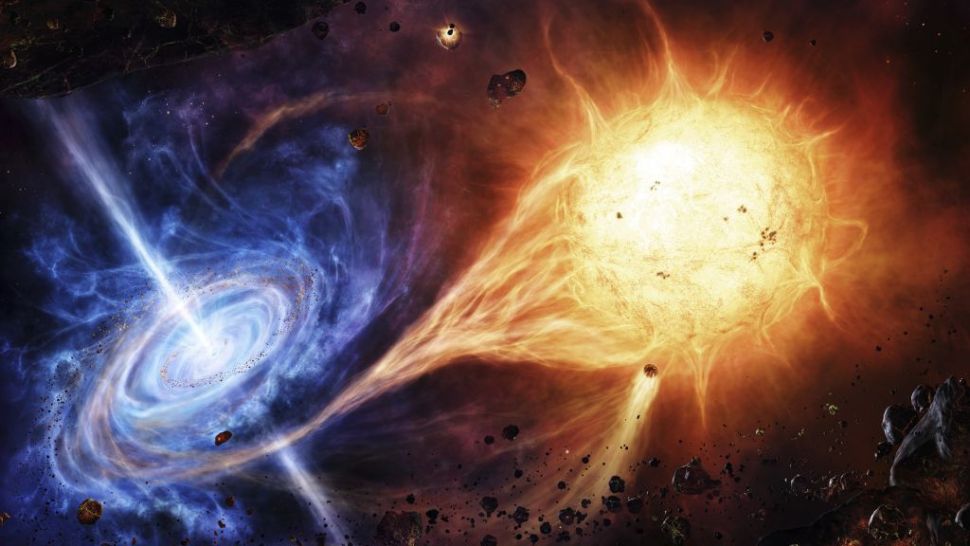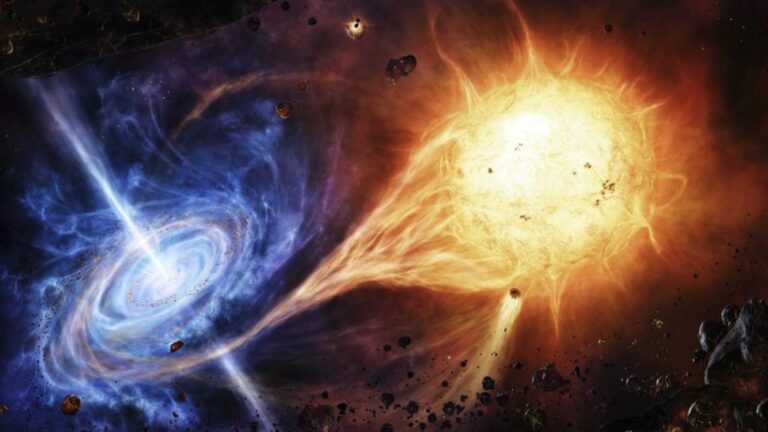Why black holes are the scariest things in the universe
For one, falling into a black hole is easily the worst way to die.
Nothing in the universe is scarier than a black hole, even though Halloween is a time to be tormented by ghosts, goblins, and ghouls.
In the headlines these days, black holes—regions in space where gravity is so intense that nothing can escape—are a popular issue. Roger Penrose received half of the 2020 Nobel Prize in Physics for his mathematical work demonstrating that black holes are an unavoidable result of Einstein’s theory of gravity. The remaining half was split between Andrea Ghez and Reinhard Genzel for their work demonstrating the existence of a large black hole at the galaxy’s center.

For three reasons, black holes are terrifying. You would be destroyed if you fell into a black hole that was created when a star perished. Additionally, all galaxies’ enormous black holes have ravenous appetites. Additionally, in black holes, the fundamental principles of physics are disregarded.
I’ve spent more than 30 years researching black holes. The supermassive black holes that lurk in the heart of galaxies have received my particular attention. The area near the black hole can glow brighter than the whole galaxy they are located in when they are active and devouring stars and gas. Quasars are galaxies that contain active black holes. Despite all we’ve learned over the last two decades about black holes, there are still a lot of unanswered questions.
Death by black hole
It is anticipated that black holes will arise when a big star dies. The star’s core collapses to a state of matter that is a hundred times denser than an atomic nucleus when its nuclear fuel runs out. Protons, neutrons, and electrons are no longer distinct particles since it is so dense. Black holes are discovered when they circle a typical star since they are dark objects. Astronomers can extrapolate the characteristics of the regular star from those of its shadowy partner, the black hole.
The brightest X-ray source in the constellation Cygnus, Cygnus X-1, was the first black hole to be officially identified. Since then, roughly 50 black holes in systems with regular stars orbiting them have been found. Of the estimated 10 million that will be dispersed over the Milky Way, these are the nearest instances.
Black holes are cemeteries for stuff from which nothing, not even light, can escape. Anyone entering a black hole would experience agonizing “spaghettification,” according to Stephen Hawking, who popularized the concept in his book “A Brief History of Time.” Your bones, muscles, sinews, and even molecules would be torn apart by the spaghetti-like gravity of the black hole. Abandon hope, all ye that come here, as the poet Dante portrayed the inscription over the gates of hell in his poem Divine Comedy.
A hungry beast in every galaxy
All galaxies feature black holes at their centers, according to measurements made with the Hubble Space Telescope during the past 30 years. Larger black holes are found in larger galaxies.
Nature is capable of creating black holes with an astounding variety of masses, ranging from monsters tens of billions of times more massive than the Sun to stellar carcasses a few times the mass of the Sun. The Great Pyramid of Giza and an apple vary in that regard.
A 7 billion solar mass monster at the heart of the M87 elliptical galaxy was the subject of the first-ever image of a black hole and its event horizon that was released by astronomers only last year.
It is more than a thousand times larger than the galaxy’s black hole, whose discoverers won the Nobel Prize this year. The most of the time, these black holes are completely dark, but when their gravitational attraction draws in surrounding stars and gas, they flare into furious activity and emit enormous amounts of radiation. Large black holes pose a threat in two different ways. You will be drawn in by the strong gravity if you approach too closely. Additionally, if they are in their active quasar phase, high-energy radiation will bombard you.
A quasar’s brightness ranges. Imagine flying at night over a big metropolis like Los Angeles. The city’s 100 million lights from streets, homes, and automobiles represent the stars of a galaxy. According to this comparison, an active black hole is like a light source in downtown Los Angeles with a diameter of 1 inch that is hundreds or thousands of times brighter than the whole city. The universe’s brightest objects are quasars.
Supermassive black holes are strange
The largest black hole to date is 20 times the size of the solar system or 40 billion times the mass of the Sun. Our solar system’s outer planets orbit once every 250 years, while this much larger object rotates every three months. It moves half as fast as light along its outside. The enormous black holes are hidden from view by an event horizon, like all black holes. A singularity, or location in space where the density is infinite, lies in their cores. Because the principles of physics are violated, we are unable to comprehend the interior of a black hole. At the event horizon, time is frozen, and at the singularity, gravity is limitless.
The good news about enormous black holes is that you might be able to survive entering one. The stretching force is less intense than it would be with a tiny black hole, therefore even if their gravity is higher, it would not be fatal to you. The event horizon represents the abyss’s edge, which is terrible news. You couldn’t escape or share your experience since nothing can leave the event horizon.
Stephen Hawking asserts that black holes are gradually dissipating. Black holes will be the only objects left in the universe in the far future, long after all stars have died and galaxies have been ripped from our field of vision by the speeding cosmic expansion.
The projected time required for the most gigantic black holes to disappear is 10 to the 100th power, or 10 with 100 zeroes following it. The universe’s most terrifying things are virtually forever.
This article is republished from The Conversation under a Creative Commons license. Read the original article.
Do not forget to share your opinion with us to provide you with the best posts !





0 Comments